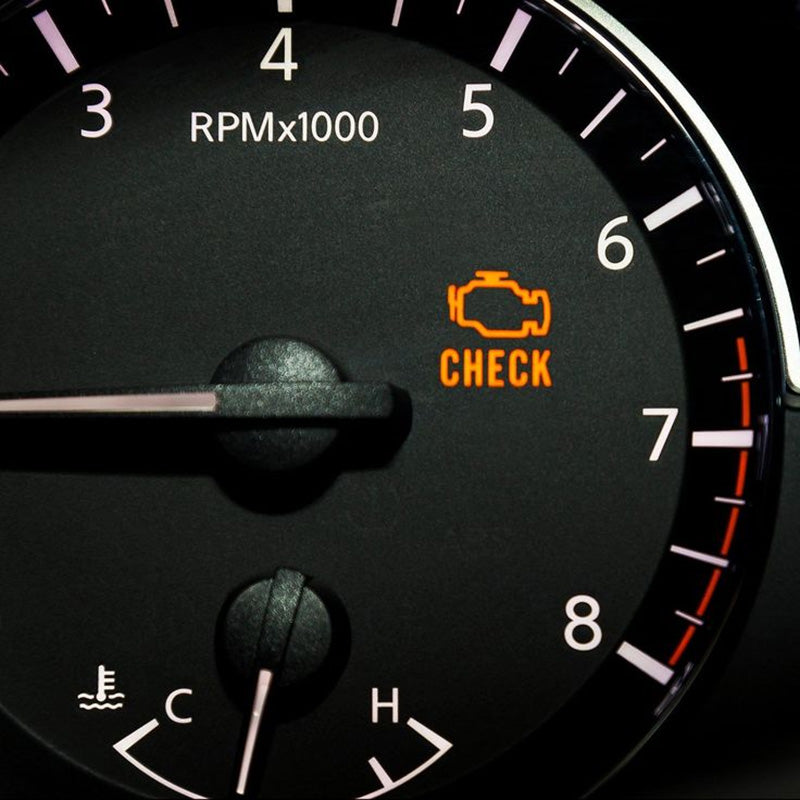The check engine light (CEL) is one of the most dreaded indicators on a car’s dashboard. Its ominous glow can signal anything from a minor issue to a serious problem requiring immediate attention. For many drivers, the uncertainty of what it means—and the potential repair costs—can be stressful. But don’t panic! This comprehensive guide will explain why your check engine light is on, the most common causes, how to diagnose the issue using tools like an OBD-II scanner, and when to seek professional help. By understanding the basics of this warning light, you can save time, money, and avoid unnecessary trips to the mechanic.
What Is the Check Engine Light?
The check engine light is part of your car’s onboard diagnostics system (OBD-II), which monitors the performance of the engine, transmission, and emissions systems. When the system detects a problem, it triggers the CEL and stores a diagnostic trouble code (DTC) in the car’s computer. This code provides a starting point for identifying the issue. The light may appear as a steady glow or a flashing warning—each with different implications.
- Steady Light: Indicates a non-emergency issue, such as a minor sensor fault or emissions problem. You can usually continue driving but should diagnose the issue soon.
- Flashing Light: Signals a severe problem, like engine misfires, which could damage the catalytic converter. Pull over safely and seek professional help immediately.
Understanding the urgency of the light is the first step in addressing the problem effectively.
Common Causes of the Check Engine Light
The check engine light can be triggered by a wide range of issues. Below are the most common culprits, along with their symptoms and potential fixes:
1. Loose or Faulty Gas Cap
A loose, damaged, or missing gas cap is one of the simplest and most common reasons for the CEL. If the cap doesn’t seal properly, it can disrupt the fuel system’s pressure, triggering an evaporative emissions (EVAP) code.
- Symptoms: No noticeable driving issues; CEL appears after refueling.
- Fix: Check the gas cap for cracks or debris, tighten it securely, or replace it (typically $10-$20). The light may take a few driving cycles to reset.
- Tip: Always ensure the cap clicks when tightening to create a proper seal.
2. Faulty Oxygen (O2) Sensor
The oxygen sensor measures the air-fuel mixture in the exhaust to optimize engine performance and emissions. A failing O2 sensor is a frequent CEL trigger, especially in older vehicles.
- Symptoms: Poor fuel economy, rough idling, or increased emissions.
- Fix: Use an OBD-II scanner to confirm the code (e.g., P0131). Replacing an O2 sensor costs $50-$200, depending on the vehicle and labor. DIY replacement is possible with basic tools.
- Tip: Address this promptly to avoid damage to the catalytic converter.
3. Catalytic Converter Issues
The catalytic converter reduces harmful emissions, but it can fail due to age, contamination, or unaddressed engine problems like misfires.
- Symptoms: Reduced acceleration, rattling noises, or a sulfur-like smell.
- Fix: Replacement is expensive ($500-$2,000). Confirm the issue with a mechanic, as misdiagnosis can be costly.
- Tip: Fix upstream issues (e.g., O2 sensors or spark plugs) to prevent catalytic converter damage.
4. Mass Airflow (MAF) Sensor Failure
The MAF sensor measures the air entering the engine to ensure the correct fuel mixture. Dirt or damage can cause it to malfunction.
- Symptoms: Stalling, hesitation during acceleration, or poor fuel efficiency.
- Fix: Clean the MAF sensor with specialized cleaner ($10) or replace it ($100-$300). Check for related issues like a clogged air filter.
- Tip: Regular air filter replacement can extend MAF sensor life.
5. Spark Plug or Ignition Coil Problems
Worn spark plugs or faulty ignition coils can cause engine misfires, triggering the CEL.
- Symptoms: Rough idling, difficulty starting, or reduced power.
- Fix: Replace spark plugs every 30,000-100,000 miles ($10-$50 per set) or ignition coils ($50-$150 each). Use an OBD-II scanner to pinpoint the affected cylinder.
- Tip: Replace all spark plugs at once for consistent performance.
6. EVAP System Leaks
The EVAP system prevents fuel vapors from escaping. Leaks in hoses, valves, or the charcoal canister can trigger the CEL.
- Symptoms: Often no noticeable performance issues; may smell fuel near the car.
- Fix: Diagnose with a smoke test at a shop ($100-$200) or check for loose hoses. Repairs vary widely in cost.
- Tip: Avoid overfilling the gas tank to reduce EVAP system strain.
7. Faulty Thermostat
A stuck thermostat can disrupt engine temperature regulation, affecting performance and emissions.
- Symptoms: Overheating, poor heater performance, or fluctuating temperature gauge.
- Fix: Replace the thermostat ($20-$50 for parts, plus labor). Check coolant levels and radiator condition.
- Tip: Flush the cooling system every 2-3 years to prevent issues.
How to Diagnose the Check Engine Light
Diagnosing the CEL is easier than you might think, thanks to affordable tools and straightforward steps. Here’s how to get started:
1. Check for Obvious Issues
Before diving into diagnostics, inspect the gas cap, look for visible damage (e.g., loose hoses), and ensure recent maintenance wasn’t overlooked.
2. Use an OBD-II Scanner
An OBD-II scanner plugs into your car’s diagnostic port (usually under the dashboard) to read DTCs. Basic scanners cost $20-$50 and are available online or at auto parts stores.
- Steps:
1. Turn the car off and plug in the scanner.
2. Turn the ignition to “on” (don’t start the engine).
3. Follow the scanner’s prompts to retrieve codes.
4. Look up the codes online or in the scanner’s manual to identify the issue.
- Example Codes: P0300 (random misfire), P0420 (catalytic converter efficiency), P0171 (system too lean).
- Tip: Some scanners can clear codes, but only do this after addressing the problem, or the light will return.
3. Visit an Auto Parts Store
Many auto parts stores (e.g., AutoZone, Advance Auto Parts) offer free CEL diagnostics. They’ll scan the code and provide a printout of possible causes, though they may push for parts sales.
4. Monitor Symptoms
Note any changes in performance, noises, or smells. This information helps narrow down the issue and provides context for mechanics.
When to Seek Professional Help
While many CEL issues are DIY-friendly, some require professional expertise. Consult a mechanic if:
- The light is flashing (indicating a severe issue like a misfire).
- You’re unsure about the diagnosis or lack the tools/skills for repairs.
- The issue involves complex systems like the catalytic converter or EVAP.
- The CEL persists after attempted fixes.
Choose a reputable mechanic or dealership, and provide them with any DTCs or symptoms to streamline the process. Get multiple quotes for major repairs to avoid overpaying.
Preventing Check Engine Light Issues
Prevention is the best way to keep the CEL off. Follow these tips:
- Stick to a Maintenance Schedule: Regular oil changes, air filter replacements, and spark plug checks reduce the risk of problems.
- Use Quality Fuel: Low-quality gas can lead to carbon buildup or sensor issues.
- Address Warning Signs Early: Don’t ignore rough idling, poor fuel economy, or unusual noises.
- Keep Records: Track maintenance and repairs to spot patterns or recurring issues.
Conclusion
The check engine light doesn’t have to be a mystery. By understanding common causes like loose gas caps, faulty O2 sensors, or spark plug issues, you can take control of your car’s health. Tools like OBD-II scanners make diagnostics accessible, while simple fixes can save you hundreds in repair costs. For complex or persistent problems, a trusted mechanic is your best ally. Stay proactive with regular maintenance, and you’ll keep your car running smoothly and the check engine light at bay.
Have a story about tackling a check engine light issue? Share it in the comments or reach out for more car maintenance tips!

